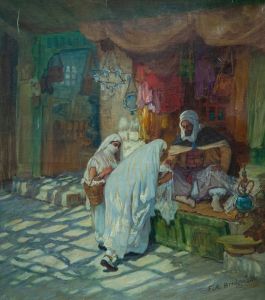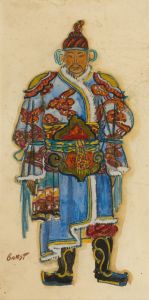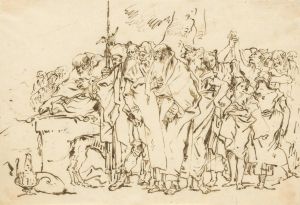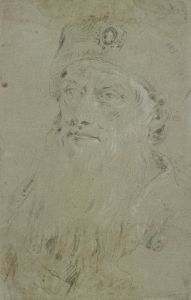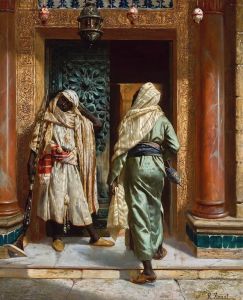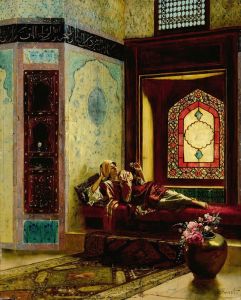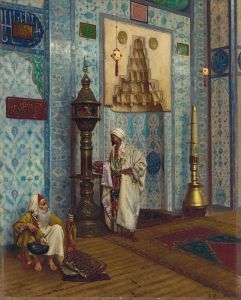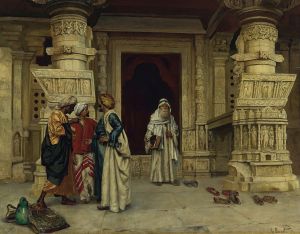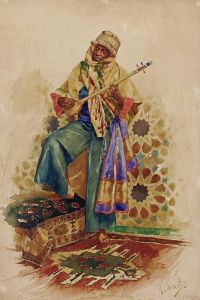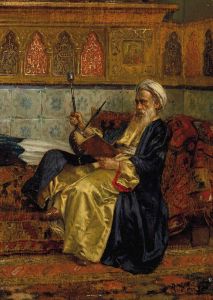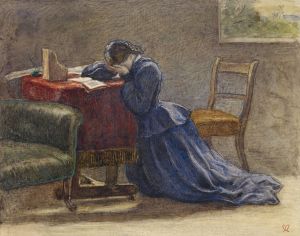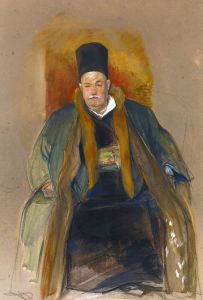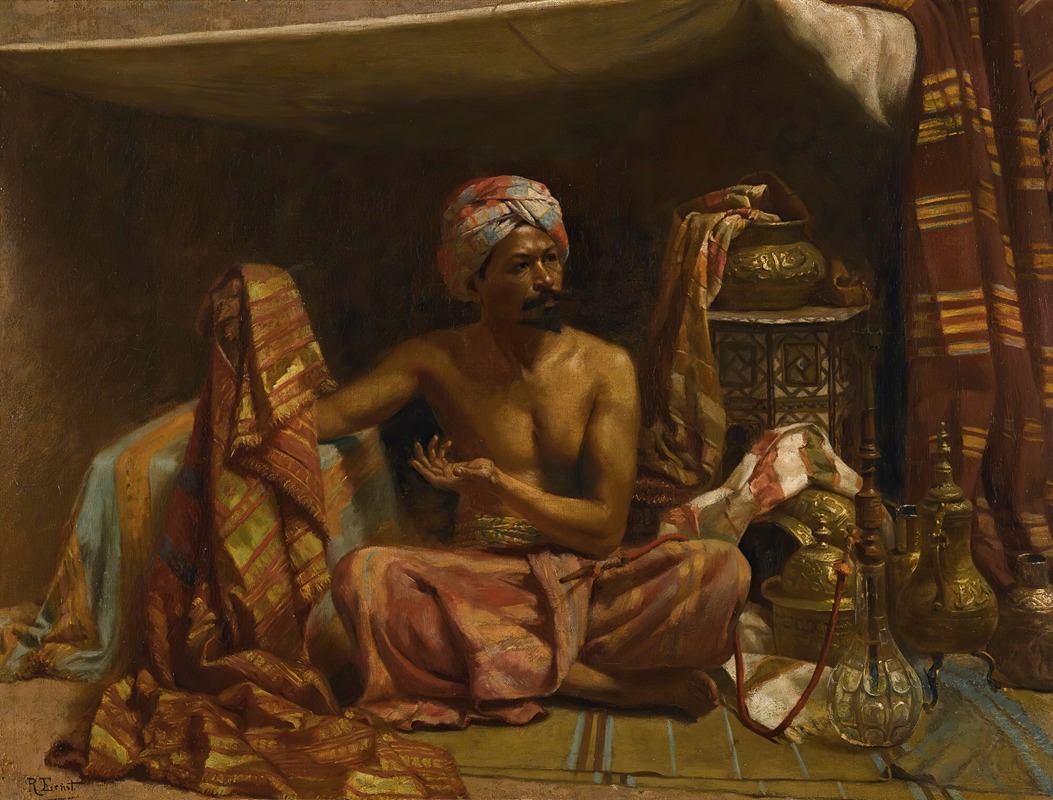
The Rug Merchant
A hand-painted replica of Rudolf Ernst’s masterpiece The Rug Merchant, meticulously crafted by professional artists to capture the true essence of the original. Each piece is created with museum-quality canvas and rare mineral pigments, carefully painted by experienced artists with delicate brushstrokes and rich, layered colors to perfectly recreate the texture of the original artwork. Unlike machine-printed reproductions, this hand-painted version brings the painting to life, infused with the artist’s emotions and skill in every stroke. Whether for personal collection or home decoration, it instantly elevates the artistic atmosphere of any space.
Rudolf Ernst was an Austrian painter known for his Orientalist works, which often depicted scenes inspired by the cultures and architecture of the Middle East and North Africa. One of his notable paintings, The Rug Merchant, exemplifies his fascination with intricate details, vibrant colors, and the romanticized portrayal of Eastern life that was popular in 19th-century European art.
The Rug Merchant portrays a richly detailed scene of a merchant displaying an array of luxurious rugs, likely in a marketplace or bazaar setting. The painting showcases Ernst's meticulous attention to detail, particularly in the textures and patterns of the rugs, which are rendered with remarkable precision. The composition often includes architectural elements, such as ornate arches or tiled walls, which reflect Ernst's interest in Islamic art and design. These elements serve to frame the central figure of the merchant and emphasize the exoticism that appealed to European audiences of the time.
Ernst's work was heavily influenced by his travels and his exposure to Orientalist themes, which were in vogue during the late 19th and early 20th centuries. While it is unclear whether Ernst himself traveled extensively to the regions he depicted, his paintings often drew from a combination of imagination, studio props, and references to other Orientalist works. This approach was common among European artists of the period, who sought to evoke an idealized vision of the "Orient" rather than document it accurately.
The Orientalist movement, of which Ernst was a part, has been both celebrated for its artistic achievements and critiqued for its stereotypical and romanticized portrayals of Eastern cultures. The Rug Merchant is a prime example of this duality, as it demonstrates Ernst's technical skill and aesthetic sensibility while also reflecting the Eurocentric perspectives of his time.
Today, The Rug Merchant and similar works by Rudolf Ernst are appreciated for their artistic merit and as historical artifacts that provide insight into 19th-century European perceptions of the East. Ernst's paintings are held in private collections and occasionally appear in exhibitions or auctions, where they continue to attract interest from collectors and art historians alike.






